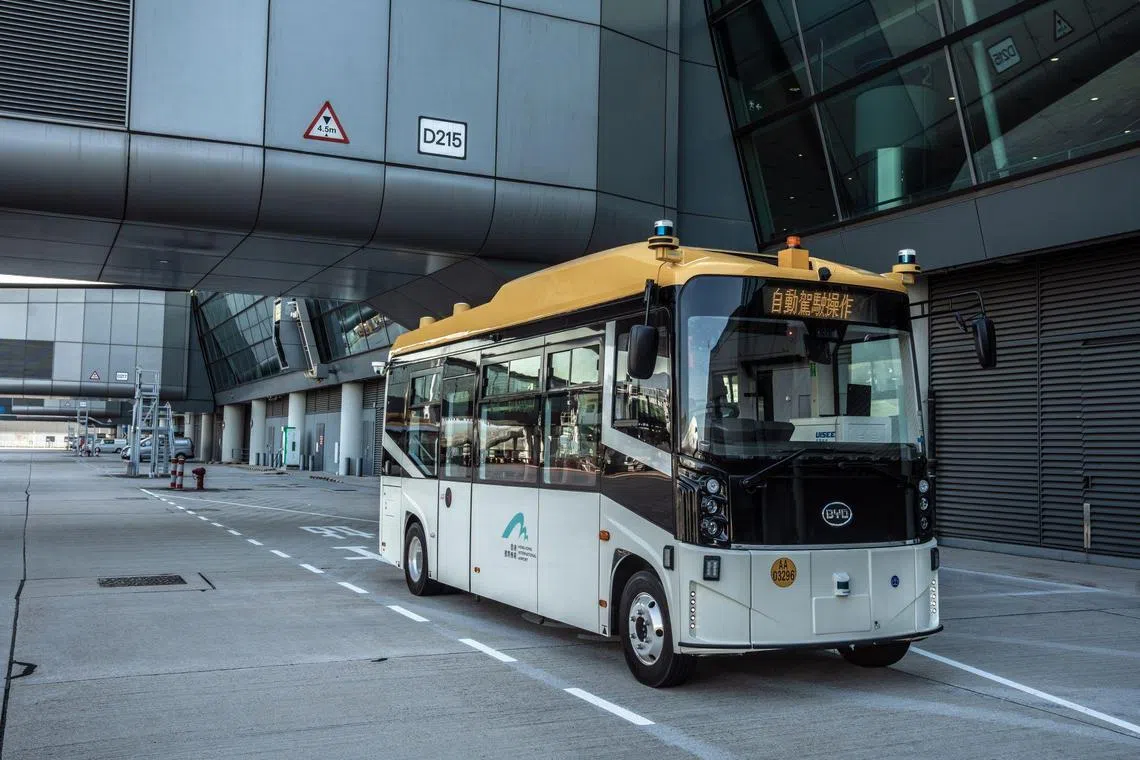Hong Kong airport’s robobus offers glimpse of driverless future
Sign up now: Get ST's newsletters delivered to your inbox

The BYD J6 autonomous electric bus has 10 cameras and uses GPS locators to track its position.
PHOTO: BLOOMBERG
Follow topic:
HONG KONG – Hong Kong International Airport is ready to use driverless buses, confident that it can shuttle passengers around the aerodrome from 2023 after extensive trials.
By bolting on cameras, sensors and tracking devices, the Asian financial hub’s main airport has adapted and kitted out an electric bus from Chinese carmaker BYD and been testing so-called Level 4 autonomous technology.
The four-year effort, using other types of driverless vehicles without passengers, has racked up around 130,000km without an accident, according to the airport.
“We can carry passengers to and from different destinations – totally driverless,” said the airfield’s general manager Chapman Fong.
Reaching full autonomous driving with flawless safety in a real world environment is the holy grail for automakers and tech firms. But despite the tens of billions of dollars spent, it remains elusive.
While self-driving trucks are being used in some controlled applications, like hauling rocks around a mine site, cars without humans that can navigate streets shared by pedestrians, pets and other vehicles do not exist.
The airport’s bus, a BYD J6 model, seats 14 passengers, has 10 cameras placed outside the vehicle from Uisee Technology (Beijing) and uses Global Positioning System locators to track its position.
A key part of the technology’s hardware is in a sizeable, silver metal case next to where a driver would sit. It holds the driverless unit and a back-up system that can independently scan the path ahead. If the main system fails, the back-up kicks in.
“For the autonomous technology, we are quite confident because we have been using it for live operations and have had zero accidents,” Mr Fong said. Having passengers on board is another milestone, and “we’re confident it’s the next move for autonomous vehicles at this airport”.
It is not the airport’s first foray into high-tech transport.
The airport now deploys four battery-powered patrol cars made by SAIC-GM-Wuling Automobile as security to patrol the airfield perimeter and has a fleet of 12 battery-powered tractors towing passenger baggage containers and another four for air cargo. Sensors for those are made by San Jose-based Velodyne Lidar.
The airport’s combustion-engine fleet of around 40 buses and some 800 tractors for cargo and baggage should be ready to shift to automated systems over the coming years, the aviation hub says, and all ground transport should be electric by the end of 2030.
Longer term, the airport also sees driverless, autonomous technology as useful to alleviate a general shortfall in labour. It is down by a third from its pre-pandemic workforce of 73,000.
BLOOMBERG

